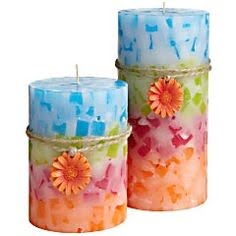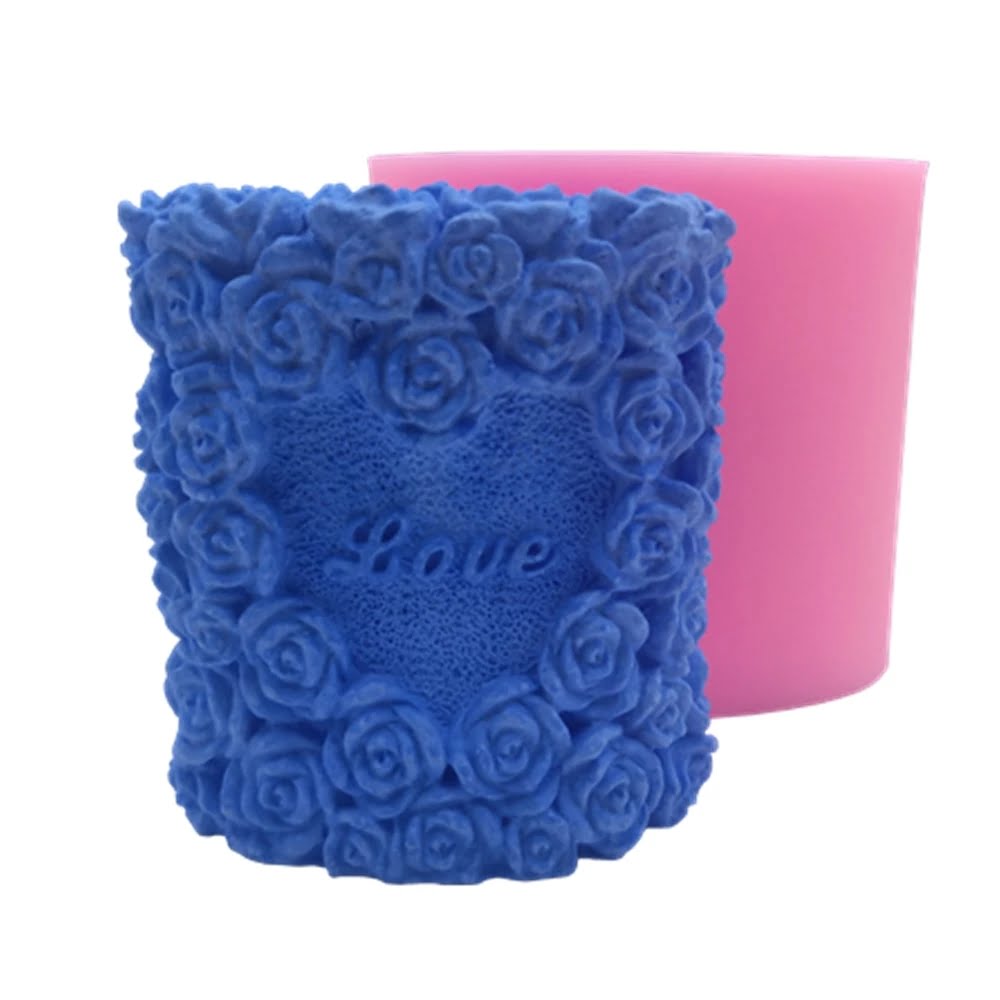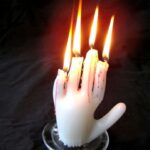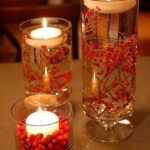Hot throw candle making has become a rising trend in the crafting world, captivating enthusiasts with its ability to fill any room with delightful fragrances. The art of creating hot throw candles involves infusing them with scents that are not only strong but also long-lasting. In this introductory section, we will delve into the world of hot throw candle making, exploring its increasing popularity and the advantages it offers.
So what sets hot throw candles apart? Unlike regular candles, which often emit faint or fleeting scents, hot throw candles are designed to fill a space with their fragrance when lit. This makes them an ideal choice for those who crave an immersive olfactory experience and desire a subtle but constant aroma in their homes or workspaces.
The secret behind the enticing and long-lasting scent of hot throw candles lies in the science behind fragrance diffusion. When crafting these candles, careful consideration is given to selecting the right combination of waxes and fragrance oils. It’s not just about finding a pleasing aroma; it’s about pairing it with specific types of wax that optimize scent diffusion when heated.
Intrigued by the artistry and technicality involved in creating these wonderfully scented candles? Stay tuned as we explore the chemistry behind hot throw fragrances and discuss essential equipment, step-by-step guides, troubleshooting tips, and innovative techniques that can elevate your experiences in hot throw candle making. Ignite your passion for this craft as we embark on a journey through the world of hot throw candle making.
The Science Behind Hot Throw Fragrance
Hot throw candles are known for their strong and long-lasting fragrance. But what exactly is the science behind this impressive scent? To understand the chemistry involved, it’s important to know that hot throw candles are made using specific fragrance oils and waxes that have been formulated to create a powerful scent when heated.
The secret lies in the volatility of fragrance molecules. When heated, these molecules vaporize and become airborne, allowing us to smell them. However, not all fragrance oils are created equal when it comes to hot throw. Some oils contain larger molecules that may have a harder time vaporizing and dispersing into the air.
To achieve maximum hot throw, it’s crucial to choose fragrance oils specifically designed for this purpose. These oils typically have smaller molecules that can easily disperse into the air when exposed to heat. Additionally, selecting high-quality waxes can also contribute to a stronger hot throw. Soy wax is often preferred for its ability to hold a higher percentage of fragrance oil compared to other waxes.
To ensure an optimal hot throw experience, it’s recommended to use the correct ratio of fragrance oil to wax. Generally, the ideal ratio is about 1 ounce of fragrance oil for every pound of wax. This ensures a good balance between scent intensity and burn quality.
In summary, the science behind hot throw fragrances involves choosing fragrance oils with smaller molecules that easily vaporize when heated. When combined with high-quality waxes and proper ratios, these fragrances create a powerful scent that fills any space with an inviting aroma.
Essential Equipment and Materials for Hot Throw Candle Making
To successfully create hot throw candles, it is essential to have the right equipment and materials. Having the proper tools not only ensures a smooth and efficient candle making process but also plays a crucial role in enhancing the hot throw fragrance. Here is a comprehensive list of essential equipment and materials needed for hot throw candle making:
- Double Boiler: A double boiler consists of two stacked pots, with the bottom one filled with water and the top one used for melting wax. This indirect heat method prevents overheating and ensures uniform melting.
- Thermometer: A thermometer is necessary to monitor the temperature of the wax during the melting process. Maintaining the correct temperature range is crucial for achieving optimal fragrance distribution.
- Molds: Choose molds that are heat-resistant, durable, and suitable for hot throw candle making. Silicone or metal molds are commonly used due to their ability to withstand high temperatures.
- Wicks: Select wicks designed specifically for hot throw candles, as they are typically larger in diameter to provide better scent diffusion. The type of wick can also affect how evenly the candle burns, so choose based on your specific wax blend.
- Fragrance Oils: High-quality fragrance oils are key to achieving a strong and long-lasting scent in hot throw candles. Look for oils specifically formulated for candle making that have been tested for superior performance in heat retention.
- Wax: Choose a wax formulation suitable for hot throw candle making, such as soy wax or coconut wax, which have excellent scent-carrying properties.
- Dyes or Colorants (optional): If desired, you can add dyes or colorants to achieve vibrant or subtle hues in your candles. However, keep in mind that some dyes may affect scent diffusion.
- Heat-Resistant Containers: If you prefer container candles, make sure to choose heat-resistant containers that can withstand high temperatures without cracking or shattering.
It is important to invest in high-quality equipment and materials to achieve the best results when making hot throw candles. Using subpar tools or ingredients may compromise the fragrance diffusion and overall quality of the final product. By having the essential equipment and materials on hand, candle makers can create exquisite hot throw candles that will fill any space with enticing scents.
| Equipment | Materials |
|---|---|
| Double Boiler | Fragrance Oils |
| Thermometer | Wax |
| Molds | Dyes or Colorants (optional) |
| Wicks | Heat-Resistant Containers |
Step-by-Step Guide
Hot throw candle making is a popular crafting technique that allows individuals to create candles with strong and long-lasting scents. To master the art of hot throw candle making, it is essential to follow a step-by-step guide that ensures optimal fragrance distribution. This section will break down the candle making process into clear and concise steps, providing beginners with the necessary knowledge to create their own hot throw candles.
Step 1: Prepare Your Workspace
Before diving into the candle making process, it is important to prepare your workspace properly. Clear a clean and clutter-free area where you can set up your equipment and materials. Ensure good ventilation to prevent the accumulation of fumes during the melting process. Place newspapers or plastic sheets on your work surface for easy cleanup.
Step 2: Measure and Melt Wax
The next step is to measure and melt your wax. Begin by determining how much wax you will need based on the size of your desired candles.
Use a double boiler or a heat-safe pouring pitcher placed in a pot filled with water as a makeshift double boiler. Place the wax in the top of the double boiler or pouring pitcher and heat it gently until it reaches its melting point, which varies depending on the type of wax being used.
Step 3: Add Fragrance Oil
Once the wax has melted completely, it’s time to add your chosen fragrance oil. It is crucial to use high-quality fragrance oils specifically formulated for candle making. The amount of fragrance oil needed depends on personal preference and the desired strength of scent. A general guideline is to use around 1 ounce (30 ml) of fragrance oil per pound (450 grams) of wax, but be sure to check specific recommendations from your fragrance oil supplier.
Carefully stir in the fragrance oil using a heat-resistant spoon or spatula, ensuring it is evenly distributed throughout the melted wax. It is important to stir gently and avoid creating air bubbles, which can affect the scent throw of your candles.
Step 4: Prepare Molds and Wicks
While the fragranced wax is still warm, prepare your candle molds and wicks. Secure the wick in the center of each mold using a wick tab or adhesive. Some candle makers prefer to use wick centering devices or glue dots to ensure a perfectly centered wick.
Step 5: Pour Wax into Molds
Carefully pour the fragranced wax into each prepared mold, ensuring that the wick remains centered as you pour. Leave some space at the top of each mold to accommodate any shrinkage during cooling. Allow the candles to cool and solidify completely before proceeding to the next step.
Following these steps will lay a strong foundation for hot throw candle making success. By mastering this step-by-step guide, candle makers can create beautifully scented candles that enhance any space with their long-lasting fragrance.
Choosing the Best Fragrance Oils for Hot Throw Candles
Fragrance Oils: The Key to a Strong Hot Throw
When it comes to hot throw candle making, the choice of fragrance oils is crucial in achieving a strong and long-lasting scent. Fragrance oils are specifically formulated to be used in candles and can range from floral and citrus scents to earthy and exotic aromas. It is important to select fragrance oils that have been tested for their hot throw capabilities to ensure optimal fragrance diffusion.
Understanding Fragrance Oil Performance
Not all fragrance oils are created equal when it comes to hot throw performance. Some oils may have a stronger hot throw than others due to variations in their composition and concentration. It is essential to check the product descriptions or consult with suppliers for information on the hot throw capability of each fragrance oil.
Fragrance oils can be classified into top notes, middle (or heart) notes, and base notes based on their volatility and evaporation rates. Top notes are the initial scent that is immediately noticeable when the candle is lit. Middle notes add complexity and depth to the fragrance, while base notes provide a lingering aroma that lingers even after the candle is extinguished. A well-balanced combination of these different note types can enhance the overall hot throw effect.
Experimenting with Fragrance Combinations
One exciting aspect of hot throw candle making is the ability to experiment with different fragrance combinations. By blending different fragrances together, you can create unique scents that cater to specific moods or atmospheres. For example, combining lavender and vanilla can result in a soothing and calming aroma perfect for relaxation.
It’s also important to consider the wax type when selecting fragrance oils for hot throw candles. Some waxes may perform better with certain types of fragrances due to variations in melting temperature or compatibility. Be sure to research specific wax and fragrance oil combinations or consult experienced candle makers for recommendations.
Troubleshooting Common Hot Throw Candle Making Issues
Poor Scent Diffusion
One common issue that candle makers may encounter during the hot throw process is poor scent diffusion. This can result in a candle that does not emit a strong fragrance when lit. There are several possible causes for this problem.
First, it is important to ensure that the fragrance oil used is compatible with the wax being used. Some fragrance oils may not blend well with certain waxes, leading to a weaker scent throw. Experimenting with different fragrance and wax combinations can help determine which ones work best together for optimal scent diffusion.
Another possible cause of poor scent diffusion is using too little fragrance oil. It is essential to follow recommended usage rates provided by the fragrance oil manufacturer. Using too little fragrance oil will result in a weaker hot throw, while using too much may lead to other issues like sooting or poor burn performance.
Additionally, the size and type of wick used can affect scent diffusion. Choosing a wick that matches the diameter of the candle and burns properly is crucial for releasing the maximum amount of fragrance into the air. If the wick is too small or improperly trimmed, it may not create enough heat to fully disperse the scent throughout the space.
Uneven Fragrance Distribution
Another common issue that can arise when making hot throw candles is uneven fragrance distribution. This means that certain areas of the candle have a stronger scent than others, creating an inconsistent experience for users.
One possible cause of uneven fragrance distribution is improper pouring technique. When pouring melted wax into molds, it is essential to pour slowly and ensure thorough coverage of all areas. Rushing or uneven pouring can result in pockets without sufficient fragrance concentration.
To address this issue, consider using techniques such as layering scents or incorporating different fragrances at varying points throughout the candle-making process. This can help distribute scents more evenly, as each layer adds its own unique fragrance to the overall composition.
Furthermore, choosing the right type of wax can also impact fragrance distribution. Some waxes have better scent diffusion properties than others. Researching and experimenting with different wax options can help achieve a more consistent hot throw throughout the entire candle.
Other Common Issues and Solutions
In addition to poor scent diffusion and uneven fragrance distribution, there are other common issues that may arise during hot throw candle making. These include issues such as frosting, tunneling, or poor cold throw.
Frosting is the formation of a white crystalline layer on the surface of the candle and can hinder fragrance release. To minimize frosting, consider using additives like stearin or vybar in your wax blend, as they can help prevent this issue.
Tunneling occurs when a tunnel-like hole forms down the center of the candle while burning, resulting in wasted wax and reduced fragrance throw. To prevent tunneling, ensure that you trim the wick to an appropriate length before each use and allow the candle to burn long enough for the melted wax pool to reach all edges of the container.
If experiencing poor cold throw (a weak scent when the candle is not lit), try adding a small amount of fragrance oil after pouring it into molds. This extra boost can enhance cold throw without affecting hot throw performance.
By troubleshooting these common issues and implementing various solutions, candle makers can optimize their hot throw candles’ fragrance diffusion and create delightful scents that linger in any space.
Enhancing Hot Throw
Hot throw candles are known for their ability to fill a room with a strong and long-lasting fragrance. While the right combination of fragrance oils and waxes plays a significant role in achieving a great hot throw, there are also some creative ideas and techniques that can be employed to enhance the aroma even further. This section will explore different ways to elevate the hot throw of candles, using unique additives, layering scents, and experimenting with wax blends.
One creative idea to enhance the hot throw is by incorporating botanicals or spices into the candle. Adding dried lavender buds or cinnamon sticks to the melted wax can infuse a natural and aromatic element into the fragrance. These additions not only provide visual interest but also release subtle scents as they burn, intensifying the overall hot throw experience.
Layering scents is another technique that can elevate the fragrance diffusion of hot throw candles. By pouring different fragrances in layers, one on top of another, you can create complex scent combinations that develop over time as each layer burns. This technique adds depth and complexity to the final aroma, making it more captivating and long-lasting.
Experimenting with different wax blends can also contribute to enhancing the hot throw of candles. Certain waxes, such as soy or coconut wax, have better fragrance retention properties compared to others. By blending these waxes with other types, candle makers can customize their blend according to their desired hot throw strength and longevity.
| Idea/Technique | Description |
|---|---|
| Incorporating Botanicals or Spices | Add dried flowers or herbs like lavender or spices like cinnamon sticks to infuse natural scents into candles. |
| Layering Scents | Pour different fragrances in layers to create complex scent combinations that develop over time as each layer burns. |
| Experimenting with Wax Blends | Blend waxes with better fragrance retention properties, such as soy or coconut wax, to customize hot throw strength and longevity. |
Hot Throw Candle Making
Creating hot throw candles that fill a room with fragrance requires skill and knowledge. To help you achieve exceptional hot throw fragrance, we have gathered tips and tricks from experienced candle makers renowned for their expertise in this area.
1. Select High-Quality Fragrance Oils: The choice of fragrance oil plays a crucial role in the hot throw of your candle. Experienced professionals recommend opting for high-quality fragrance oils specifically formulated for candle making. These oils are designed to withstand the heat of the burning candle, ensuring a strong and long-lasting scent. It is also important to experiment with different concentrations of fragrance oils to find the perfect balance for maximum hot throw.
2. Pay Attention to Wick Size: The size of the wick can significantly impact the hot throw of your candle. A wick that is too small may not create enough heat to release the fragrance adequately, while a wick that is too large can result in excessive soot and poor scent distribution. The pros suggest testing different wick sizes to find the optimal one for your specific wax and fragrance combination.
3. Cure Your Candles: Allowing your candles to cure after pouring them is essential for enhancing their hot throw fragrance. Experienced candle makers recommend letting your candles cure for at least a week before burning them. This curing period allows the fragrance molecules to fully bond with the wax, resulting in a stronger and more pronounced scent when lit.
4. Use Proper Candle Care Techniques: To ensure an optimal hot throw experience, it is crucial to follow proper candle care techniques. Trim the wick to ¼ inch before each burn to control flame height and prevent excessive soot buildup.
Also, it’s recommended to burn your candle for at least two hours during each use, allowing the melted wax pool to reach the edges of the container or mold. This technique helps prevent tunneling and promotes even scent distribution throughout the life of the candle.
By incorporating these tips and tricks from the pros into your hot throw candle making process, you can elevate your candle crafting skills and achieve exceptional fragrance diffusion. Remember, practice makes perfect, so don’t be afraid to experiment and find what works best for you. Good luck on your hot throw candle making journey.
Conclusion
In conclusion, hot throw candle making is a captivating craft that has gained significant popularity in recent years. The art of creating hot throw candles not only allows individuals to express their creativity but also offers numerous benefits and unique characteristics.
By understanding the science behind hot throw fragrance, using the appropriate equipment and materials, following a step-by-step guide, selecting the best fragrance oils, troubleshooting common issues, and exploring innovative techniques, anyone can achieve exceptional results in hot throw candle making.
The chemistry involved in hot throw fragrance is fascinating and plays a crucial role in creating long-lasting scents. Through the careful selection of fragrance oils and waxes, candle makers can achieve maximum hot throw and ensure that their candles release a strong aroma when lit. Additionally, having essential equipment like a double boiler, thermometer, molds, wicks, and high-quality materials further enhances the overall experience of creating hot throw candles.
While there may be challenges along the way, it is important to troubleshoot common issues such as poor scent diffusion or uneven fragrance distribution. By addressing these challenges with practical solutions and expert advice from experienced candle makers, individuals can overcome obstacles for a better hot throw experience.
Moreover, exploring creative ideas such as incorporating unique additives like botanicals or spices into the candles or experimenting with layering scents and different wax blends can elevate the fragrance diffusion in hot throw candles.
In conclusion, igniting your passion for hot throw candle making can be a fulfilling journey filled with endless possibilities for crafting beautiful and aromatic candles. Whether you are looking to enhance the ambiance of your own space or create personalized gifts for loved ones, hot throw candle making offers a satisfying outlet for creativity.
With this concluding section serving as a comprehensive guide throughout the process of hot throw candle making, readers are inspired to embark on their own journey while being provided resources to further develop their skills in this craft. So go ahead and let your imagination soar as you dive into the world of enchanting scents and captivating hot throw candle making.

Welcome to my candle making blog! In this blog, I will be sharing my tips and tricks for making candles. I will also be sharing some of my favorite recipes.





